Evidence that the plant cannabinoid cannabigerol is a highly potent alpha2-adrenoceptor agonist and moderately potent 5HT1A receptor antagonist
- PMID: 20002104
- PMCID: PMC2823359
- DOI: 10.1111/j.1476-5381.2009.00515.x
Evidence that the plant cannabinoid cannabigerol is a highly potent alpha2-adrenoceptor agonist and moderately potent 5HT1A receptor antagonist
Abstract
Background and purpose: Cannabis is the source of at least seventy phytocannabinoids. The pharmacology of most of these has been little investigated, three notable exceptions being Delta(9)-tetrahydrocannabinol, cannabidiol and Delta(9)-tetrahydrocannabivarin. This investigation addressed the question of whether the little-studied phytocannabinoid, cannabigerol, can activate or block any G protein-coupled receptor.
Experimental approach: The [(35)S]GTPgammaS binding assay, performed with mouse brain membranes, was used to test the ability of cannabigerol to produce G protein-coupled receptor activation or blockade. Its ability to displace [(3)H]CP55940 from mouse CB(1) and human CB(2) cannabinoid receptors and to inhibit electrically evoked contractions of the mouse isolated vas deferens was also investigated.
Key results: In the brain membrane experiments, cannabigerol behaved as a potent alpha(2)-adrenoceptor agonist (EC(50)= 0.2 nM) and antagonized the 5-HT(1A) receptor agonist, R-(+)-8-hydroxy-2-(di-n-propylamino)tetralin (apparent K(B)= 51.9 nM). At 10 microM, it also behaved as a CB(1) receptor competitive antagonist. Additionally, cannabigerol inhibited evoked contractions of the vas deferens in a manner that appeared to be alpha(2)-adrenoceptor-mediated (EC(50)= 72.8 nM) and displayed significant affinity for mouse CB(1) and human CB(2) receptors.
Conclusions and implications: This investigation has provided the first evidence that cannabigerol can activate alpha(2)-adrenoceptors, bind to cannabinoid CB(1) and CB(2) receptors and block CB(1) and 5-HT(1A) receptors. It will now be important to investigate why cannabigerol produced signs of agonism more potently in the [(35)S]GTPgammaS binding assay than in the vas deferens and also whether it can inhibit noradrenaline uptake in this isolated tissue and in the brain.
Figures
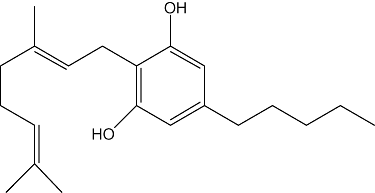
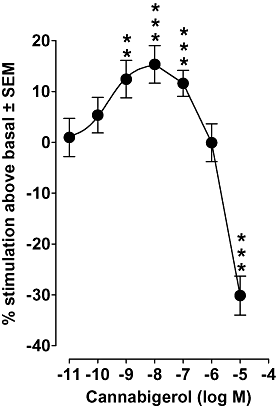
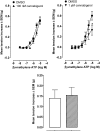
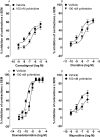


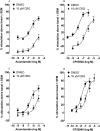
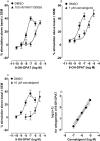
References
-
- Barbaccia ML, Ravizza L, Costa E. Maprotiline: an antidepressant with an unusual pharmacological profile. J Pharmacol Exp Ther. 1986;236:307–312. - PubMed
-
- Breivogel CS, Griffin G, Di Marzo V, Martin BR. Evidence for a new G protein-coupled cannabinoid receptor in mouse brain. Mol Pharmacol. 2001;60:155–163. - PubMed
-
- Cascio MG, Gauson LA, Stevenson LA, Ross RA, Pertwee RG. Cannabigerol behaves as a potent alpha-2-adrenoceptor partial agonist. Symposium on the Cannabinoids. Burlington, Vermont, International Cannabinoid Research Society. 2009. p. 73.
-
- Cheng Y-C, Prusoff WH. Relationship between the inhibition constant (KI) and the concentration of inhibitor which causes 50 percent inhibition (IC50) of an enzymatic reaction. Biochem Pharmacol. 1973;22:3099–3108. - PubMed
Publication types
MeSH terms
Substances
Grants and funding
LinkOut - more resources
Full Text Sources
Other Literature Sources

